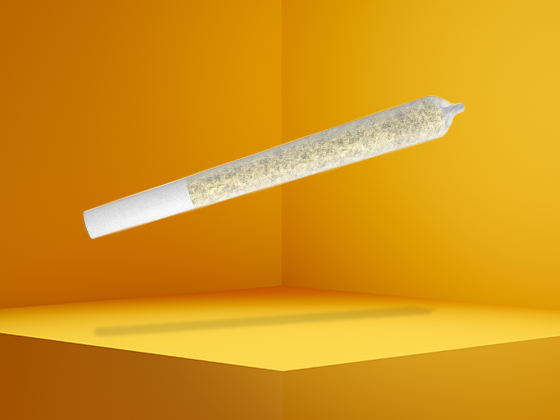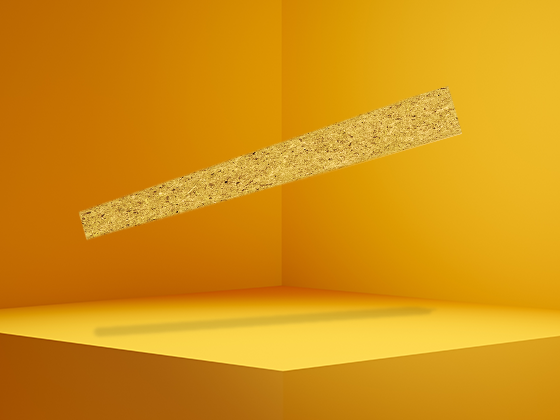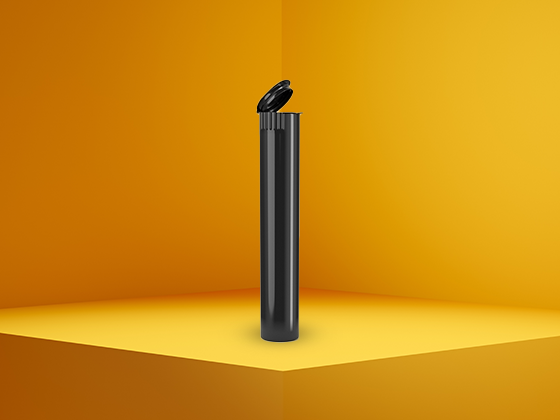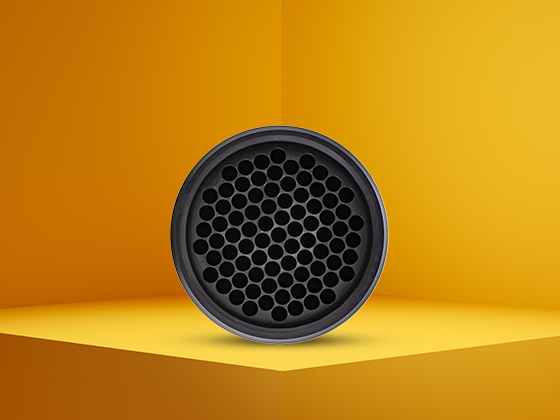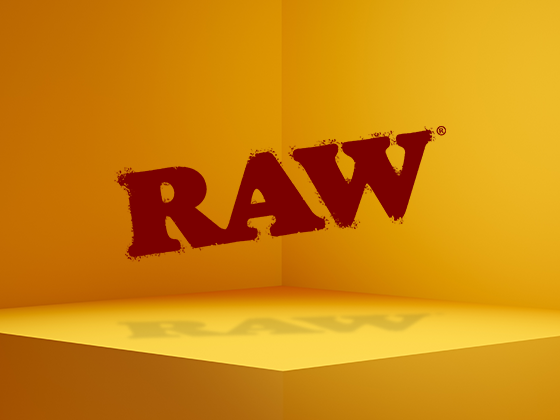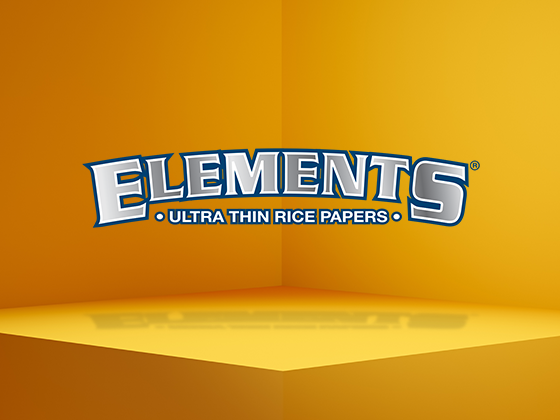Questions
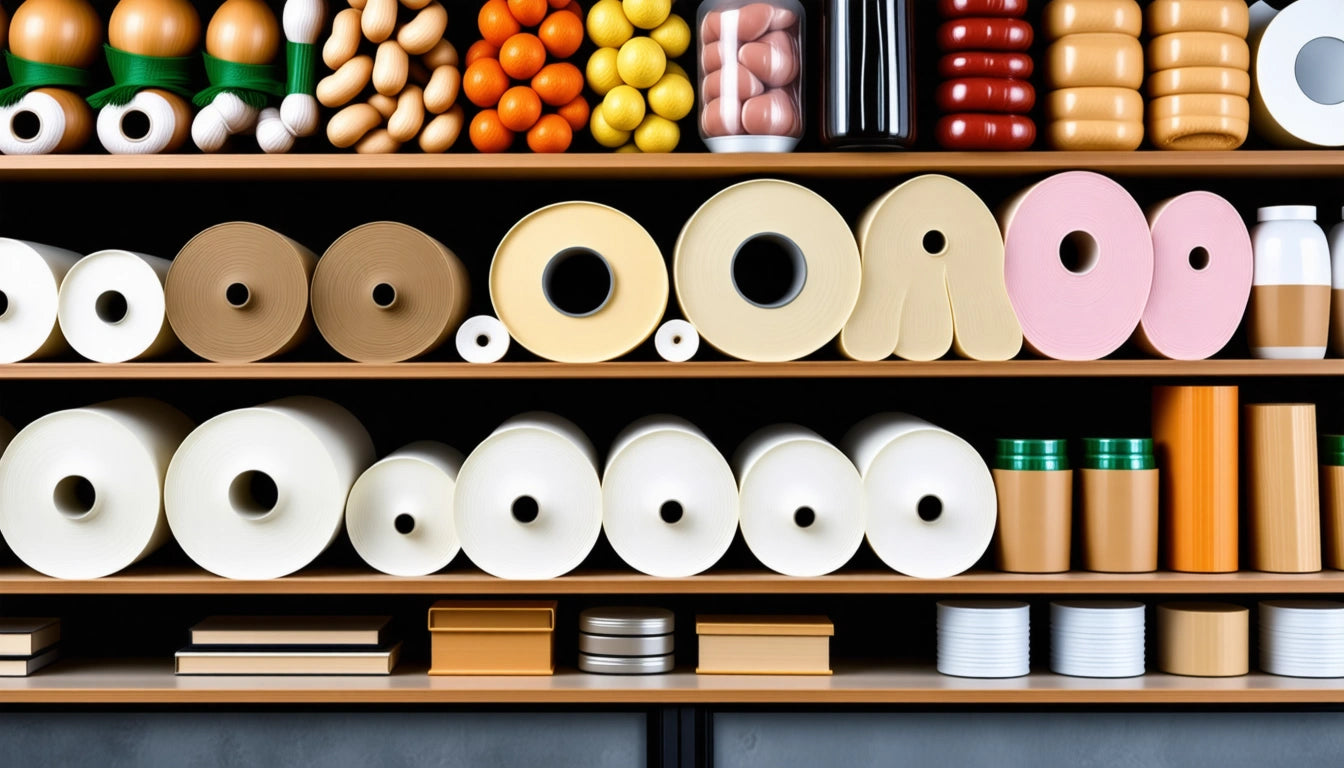
flower
How Long Do Pre-Rolls Last? Understanding Shelf Life and Storage
Table of Contents
Typical Shelf Life of Pre-Rolls: What to Expect
Factors Affecting Pre-Roll Longevity
Proper Storage Techniques for Maximum Freshness
Signs Your Pre-Rolls Have Gone Bad
Extending Pre-Roll Shelf Life: Best Practices
Freshness Preservation: Packaging Solutions for Pre-Rolls
Pre-rolls offer convenience for cannabis consumers, but their shelf life is a common concern. Understanding how long pre-rolls stay good and implementing proper storage techniques can help maintain their quality and potency over time. This guide explores the shelf life of pre-rolls, factors affecting their longevity, and best practices for storage.Typical Shelf Life of Pre-Rolls: What to ExpectOn average, properly stored pre-rolls can last between 6 months to 1 year before noticeable degradation occurs. However, this timeframe varies significantly based on several factors:
Freshness of cannabis used in the pre-roll
Storage conditions (temperature, humidity, light exposure)
Quality of packaging
Presence of additives or infusions
According to research on pre-roll shelf life, cannabis compounds begin to degrade naturally over time regardless of storage conditions, but proper handling can significantly slow this process.Factors Affecting Pre-Roll LongevityEnvironmental ConditionsThe three primary environmental factors that determine how long pre-rolls last include:
Temperature: Heat accelerates terpene evaporation and cannabinoid degradation
Humidity: Too much moisture promotes mold growth; too little dries out the cannabis
Light exposure: UV light breaks down cannabinoids, particularly THC
Packaging QualityThe container or wrapper used for pre-rolls significantly impacts their shelf life. Premium pre-rolls often come in airtight tubes or containers that protect against environmental factors. Many producers use specialized mylar bags with humidity control features that help maintain optimal moisture levels and extend how long pre-rolls stay good.Highlight: Pre-rolls stored in airtight containers away from heat, light, and humidity can maintain their quality for up to a year, while improperly stored products may degrade within weeks.Proper Storage Techniques for Maximum FreshnessTo maximize how long pre-rolls are good for, follow these storage best practices:Ideal Storage Containers
Glass jars with airtight seals
Original packaging if designed for long-term storage
Specialized cannabis storage containers with humidity control
Metal tubes with rubber seals
Avoid plastic bags or containers that aren't airtight, as these allow air exchange that accelerates degradation.Optimal Environmental ConditionsStore pre-rolls in:
Cool environments (60-70 °F/15-21 °C)
Dark locations away from direct sunlight
Spaces with controlled humidity (59-63% RH is ideal)
As detailed in this guide on mastering pre-rolls, proper storage is just as important as quality rolling techniques for maintaining product integrity.Signs Your Pre-Rolls Have Gone BadWhile pre-rolls don't "expire" in the traditional sense, they do degrade over time. Here are indicators that your pre-rolls have gone bad:
Visual cues: Discoloration, visible mold (white powdery or fuzzy spots)
Aroma changes: Musty, hay-like, or ammonia smell instead of cannabis's typical scent
Texture issues: Extremely dry and crumbly or overly damp
Taste differences: Harsh, unpleasant flavor when smoked
Effect reduction: Noticeably weaker effects than when fresh
If you notice any of these signs, it's best to discard the pre-roll, as smoking degraded or moldy cannabis can be unpleasant or potentially harmful.Extending Pre-Roll Shelf Life: Best PracticesTo extend how long pre-rolls last, consider these advanced techniques:Humidity Control SolutionsHumidity control packs designed specifically for cannabis can maintain optimal moisture levels. These two-way humidity control products can either add or remove moisture as needed to maintain the ideal range of 59-63% relative humidity.Temperature ManagementSome consumers store pre-rolls in refrigerators, but this approach requires caution. If using refrigeration:
Ensure pre-rolls are in completely airtight containers
Allow pre-rolls to return to room temperature before opening to prevent condensation
Consider using a dedicated mini-fridge to avoid food odor contamination
According to safety considerations for pre-rolls, improper storage can not only reduce potency but also potentially introduce harmful contaminants.Freshness Preservation: Packaging Solutions for Pre-RollsFor businesses and consumers alike, packaging plays a crucial role in preserving pre-roll freshness. The cannabis industry has developed specialized packaging options to extend shelf life:
Nitrogen-flushed containers that remove oxygen before sealing
UV-resistant tubes and containers that block harmful light
Vacuum-sealed options that eliminate air exposure
Multi-layer packaging with moisture barriers
When purchasing pre-rolls, look for products with manufacturing dates and properly sealed packaging. Some premium brands even include humidity control elements within their packaging to ensure products remain fresh until opening.For businesses looking to maximize the shelf life of their pre-roll products, investing in quality packaging is essential. Many producers now use specialized pre-roll packaging techniques that can significantly extend how long pre-rolls stay good on dispensary shelves.Understanding how long pre-rolls last and implementing proper storage techniques benefits both consumers and businesses in the cannabis industry. By following the guidelines outlined above, you can ensure your pre-rolls maintain their quality, potency, and flavor profile for the maximum possible time.
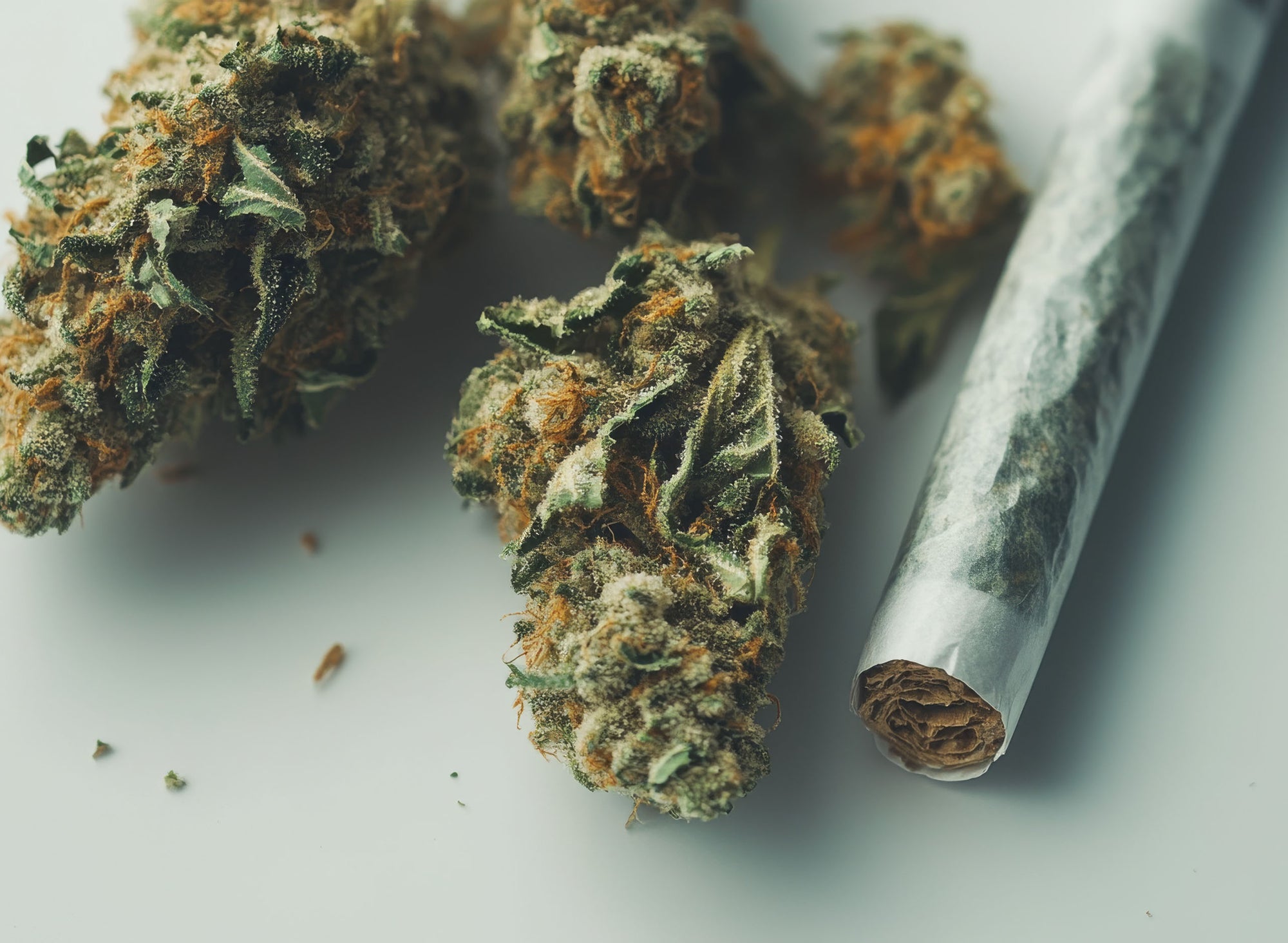
business tips
Understanding RAW Papers and Filters: Do They Come Together?
Table of Contents
RAW Papers and Filters: A Complete Overview
Do RAW Papers Come with Filters? Package Options Explained
Types of RAW Paper Filters and Their Benefits
How to Properly Use RAW Paper Filters
Alternatives to RAW Paper Filters
Choosing the Right Combination for Your Needs
Understanding RAW Papers and Filters: Do They Come Together?RAW rolling papers have become a staple in the smoking community, known for their natural, unrefined qualities and commitment to purity. A common question among both new and experienced users is whether RAW papers come with filters included, or if these must be purchased separately. This comprehensive guide explores everything you need to know about RAW papers and filters, their packaging options, and how to select the best combination for your needs.RAW Papers and Filters: A Complete OverviewRAW papers are made from unbleached, natural plant fibers, offering a clean smoking experience without added chemicals or dyes. Their popularity stems from this commitment to purity, as detailed in this comprehensive guide to RAW rolling papers.RAW filter tips (also called crutches or roaches) are designed to complement these papers. They serve several important functions:
Preventing plant material from entering your mouth
Providing structural stability to your roll
Allowing airflow while filtering particulates
Reducing waste by allowing you to smoke more of your material
While exploring options beyond RAW, we also offer premium alternatives like OCB cones that come pre-rolled with filters already attached, saving time for those who prefer convenience.Do RAW Papers Come with Filters? Package Options ExplainedThe answer to whether RAW papers come with filters depends entirely on which product you purchase. RAW offers several packaging options:Standard RAW Papers (Without Filters)Most basic packs of RAW papers do not include filters. These typically come in various sizes such as:
Single Wide (70mm)
1 ¼ Size (79mm)
King Size (110mm)
King Size Slim
RAW Papers with Tips IncludedRAW does offer specific products that include both papers and filter tips in the same package:
RAW Connoisseur packs (papers + tips)
RAW Black Connoisseur (premium papers + tips)
RAW Artesano packs (papers, tips, and a rolling tray)
These combination packs are ideal for beginners or those who prefer the convenience of having everything in one package, as highlighted in this ultimate guide to buying RAW rolling papers.Types of RAW Paper Filters and Their BenefitsRAW offers several types of filter paper products, each designed for specific preferences:Standard RAW TipsThese are the classic filter tips that come in a small booklet. They're unbleached, chlorine-free, and made from natural plant fibers.RAW Pre-Rolled TipsFor those who prefer convenience, pre-rolled tips save time and provide consistency. They come ready to use, eliminating the need to roll your own filter.RAW Perforated TipsThese feature perforations that make it easier to roll the perfect filter by providing fold lines. They're particularly helpful for beginners still mastering the art of rolling with RAW papers.RAW Glass TipsA reusable alternative to paper filters, RAW glass tips are made from borosilicate glass and provide superior filtration and cooling. They're environmentally friendly since they can be cleaned and reused indefinitely.Highlight: While many standard RAW paper packs don't include filters, specialty packs like the Connoisseur and Artesano lines come with both papers and filters in one convenient package.How to Properly Use RAW Paper FiltersUsing RAW filters effectively enhances your rolling experience:Basic Filter Rolling Technique
Take a RAW filter tip and make an accordion fold at one end (typically 3-4 folds)
Roll the remaining paper around these folds to create a cylindrical shape
Place the filter at one end of your rolling paper
Add your herb material and roll as usual, ensuring the filter stays in place
For those exploring different rolling styles and techniques, this guide to the diverse world of RAW papers offers additional insights on pairing the right papers with appropriate filters.Alternatives to RAW Paper FiltersWhile RAW filters are popular, several alternatives exist:
OCB Filters: Similar to RAW but with slightly different material composition
Elements Filters: Made from rice paper for a clean taste
Pre-rolled Cones: Products like those found in our RAW cones collection come with built-in filters
Homemade Alternatives: Some users create makeshift filters from business cards or thick paper (though not recommended due to potential chemicals)
When considering alternatives, it's important to prioritize products made from natural materials without harmful chemicals. Safety concerns are addressed in detail in this article exploring RAW organic papers' safety.Choosing the Right Combination for Your NeedsSelecting the ideal RAW papers and filters combination depends on your specific preferences and experience level:
For Beginners: RAW Connoisseur packs that include both papers and tips offer convenience and ensure compatibility
For Experienced Users: Purchasing papers and filters separately allows for customization of size and material preferences
For Convenience Seekers: Pre-rolled cones with built-in filters eliminate the rolling process entirely
For Eco-conscious Users: Reusable glass tips paired with organic RAW papers minimize environmental impact
Understanding your priorities helps determine whether you should purchase a combination pack or separate products. Factors like frequency of use, rolling skill, and portability needs all influence the ideal setup for your situation.Ultimately, whether RAW papers come with filters depends on the specific product you choose. While many standard packs require separate filter purchases, specialty packs offer the convenience of having everything in one package. By understanding the various options available, you can select the perfect combination to enhance your rolling experience.
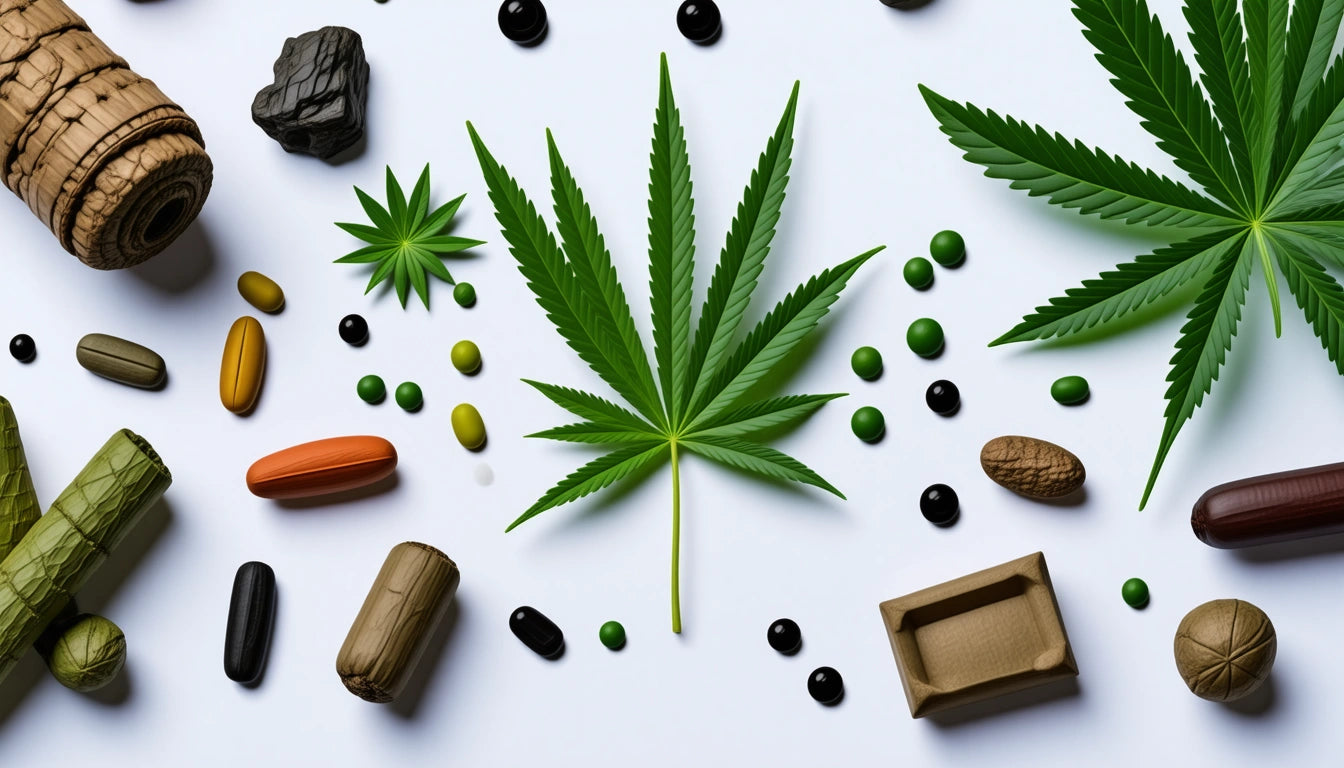
business tips
How Many Grams Are in a Joint? Understanding Cannabis Measurements
Table of Contents
Standard Joint Measurements: How Many Grams in a Joint
Factors Affecting Joint Size and Weight
Comparing Joints to Other Consumption Methods
Cost Efficiency of Joints vs. Other Consumption Methods
Maximizing Your Cannabis Experience: Tools and Techniques
Understanding how many grams are in a joint is essential for both new and experienced cannabis consumers. Whether you're budgeting your stash, preparing for a social gathering, or simply curious about standard measurements, knowing joint weights helps you make informed decisions about consumption and purchasing.Standard Joint Measurements: How Many Grams in a JointThe average joint contains approximately 0.3 to 0.5 grams of cannabis, though this can vary based on several factors. According to industry standards, a typical joint uses about 0.4 grams of ground flower.For context:
A small or "pinner" joint: 0.25-0.3 grams
A standard joint: 0.3-0.5 grams
A larger joint: 0.5-0.75 grams
A king-size joint: 0.75-1+ grams
These measurements provide a baseline, but personal preference and experience level often dictate actual quantities used. Many pre-rolled joints sold in dispensaries contain 0.5 grams, offering a standardized experience for consumers.Factors Affecting Joint Size and WeightRolling Paper SizeThe size of rolling papers significantly impacts how many grams of pot in a joint:
Single wide papers: Typically hold 0.25-0.5 grams
1 ¼ papers (standard): Hold 0.3-0.75 grams
King size papers: Can accommodate 0.75-1.5 grams
Using quality grinder machines can help achieve the perfect consistency for efficient packing, especially when preparing cannabis for larger joints or multiple rolls from the same batch.Grinding and Packing TechniqueHow finely the cannabis is ground and how tightly it's packed affects the final weight. Loosely packed joints use less material but may burn unevenly, while densely packed ones use more cannabis but provide a slower, more consistent burn.Highlight: The average joint contains 0.3 to 0.5 grams of cannabis, though personal preference and rolling technique can significantly affect this amount.Comparing Joints to Other Consumption MethodsJoints vs. EdiblesMany consumers wonder how many gummies equal a joint in terms of effects. This comparison is complicated because the body processes THC differently when smoked versus ingested:
A 0.5g joint with 20% THC contains approximately 100mg of THC
Due to combustion and exhalation, only about 20-30% of this THC (20-30mg) enters the bloodstream
A 10mg edible can produce effects comparable to a joint for many users because edible THC is processed by the liver into 11-hydroxy-THC, which is more potent
This explains why lower milligram counts in edibles can produce significant effects compared to smoking.THC Content ConsiderationsThe question of how much THC is in a typical joint depends on the potency of the cannabis used:
15% THC cannabis: A 0.5g joint contains approximately 75mg total THC
20% THC cannabis: A 0.5g joint contains approximately 100mg total THC
25% THC cannabis: A 0.5g joint contains approximately 125mg total THC
Remember that the total THC content differs from the amount actually absorbed during consumption.Cost Efficiency of Joints vs. Other Consumption MethodsUnderstanding how many grams is a joint helps consumers evaluate cost efficiency:Maximizing Your PurchaseKnowing how many joints you can roll with an eighth (3.5 grams) of cannabis helps with budgeting:
Using 0.3g per joint: Approximately 11-12 joints
Using 0.5g per joint: Approximately 7 joints
Using 0.7g per joint: Approximately 5 joints
This calculation extends to larger quantities as well, helping consumers plan their purchases according to their consumption habits.Pre-Rolls vs. DIY RollingPre-rolled joints typically cost more per gram than purchasing flower separately. However, they offer convenience and consistency that many consumers value. The cost and consumption insights show that rolling your own can save 30-50% compared to pre-rolls, depending on the market.Maximizing Your Cannabis Experience: Tools and TechniquesGetting the most from your cannabis involves more than just knowing how many grams are in a joint. The right tools and techniques can enhance your experience:
Invest in quality grinders for consistent texture
Use humidity packs to maintain freshness
Consider a scale for precise measurements
Practice rolling techniques to minimize waste
For those who regularly prepare multiple joints, learning efficient rolling techniques and using the right tools can significantly improve the experience while making your cannabis supply last longer.Understanding cannabis measurements helps consumers make informed decisions about their purchases and consumption habits. Whether you're rolling a personal joint or preparing for a social gathering, knowing how many grams are in a joint provides a foundation for responsible and enjoyable cannabis use.
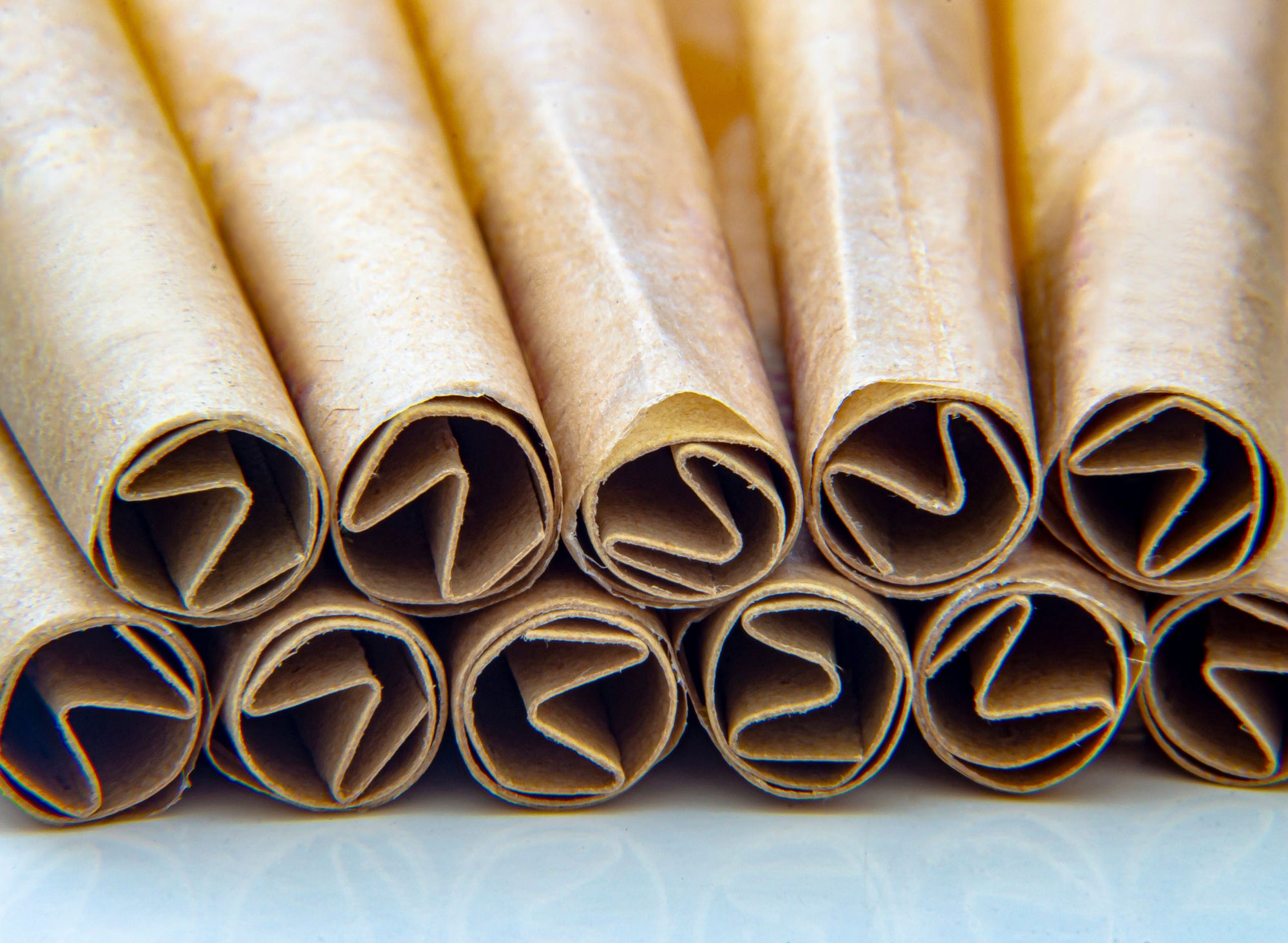
informational
Are RAW Rolling Products Biodegradable?
Table of Contents
RAW Biodegradability: An Overview
RAW Papers: Biodegradable Composition and Materials
RAW Filters and Tips: Biodegradability Assessment
RAW Cones: Environmental Impact and Decomposition
Comparing RAW to Other Eco-Friendly Alternatives
Sustainable Smoking Practices: Beyond Biodegradability
nnAre RAW Rolling Products Biodegradable?nnThe environmental impact of smoking accessories has become increasingly important to conscious consumers. RAW has positioned itself as an environmentally responsible brand, but many users still question: are RAW papers biodegradable? What about their filters, tips, and cones? This comprehensive guide examines the biodegradability of RAW's product line and what that means for environmentally conscious smokers.nnRAW Biodegradability: An OverviewnnRAW products are widely marketed as natural and unrefined. The brand emphasizes its commitment to creating products free from harmful chemicals and additives. This natural approach extends to their environmental claims about biodegradability.nnAccording to information about RAW rolling papers composition, most RAW products are made from plant-based materials, which inherently supports their biodegradability claims. However, biodegradability varies across their product range and depends on specific materials used in each item.nnRAW Papers: Biodegradable Composition and MaterialsnnRAW rolling papers are indeed biodegradable. They're made primarily from unbleached plant fibers, specifically hemp and flax. The absence of chemicals like chlorine bleach not only makes them more natural for smoking but also enhances their biodegradability.nnThe biodegradability of RAW papers is attributed to several factors:nnnUse of unrefined plant materialsnAbsence of chemical treatmentsnNatural gum arabic as an adhesive (derived from acacia trees)nNo added preservatives or artificial ingredientsnnnWhen examining the diverse world of RAW papers, you'll find that both their standard and organic varieties maintain this biodegradable quality. The RAW Organic Hemp papers, in particular, are even more environmentally friendly due to their organic cultivation processes.nnRAW Filters and Tips: Biodegradability AssessmentnnAre RAW filters biodegradable? Yes, RAW filter tips are biodegradable as they're made from unbleached plant fibers similar to their papers. The standard RAW filter tips are composed of chlorine-free wood pulp that will naturally decompose over time.nnRAW offers several filter options with varying biodegradability profiles:nnnStandard Tips: Made from unbleached paper, fully biodegradablenPerfecto Tips: Contain plant-based charcoal filters, biodegradable but may take longernPre-Rolled Tips: Same biodegradable material as standard tipsnnnWhen properly disposed of, these filters will break down naturally. However, as this comprehensive guide to RAW filter tips explains, the decomposition time can vary based on environmental conditions.nnLooking for eco-friendly alternatives? We offer environmentally conscious smoking accessories that complement sustainable consumption practices while maintaining quality and performance.nnRAW Cones: Environmental Impact and DecompositionnnAre RAW cones biodegradable? Yes, RAW pre-rolled cones maintain the same biodegradable properties as their papers. Since they're constructed from the same unbleached, natural plant fibers, they will decompose when discarded properly.nnThe biodegradability of RAW cones extends to most components:nnnThe cone paper itself (hemp or flax-based)nThe filter tip included with the conenThe natural gum used to seal the conennnIt's worth noting that while the paper components of RAW cones are biodegradable, any packaging materials may have different environmental properties. The plastic tubes that some RAW cones come in are not biodegradable, though they are recyclable in many areas.nnFor those interested in exploring RAW's cone offerings, their collection includes various sizes and styles while maintaining the same biodegradable paper composition.nnComparing RAW to Other Eco-Friendly AlternativesnnWhile RAW products are biodegradable, they're not the only eco-friendly option on the market. Several brands now compete in the sustainable smoking accessories space:nnnnBrandnBiodegradabilitynMaterialsnnnRAWnHighnUnbleached hemp and flaxnnnElementsnHighnRice papernnnOCB OrganicnHighnOrganic hempnnnHaranVery HighnSustainable bamboo and hempnnnnFor those particularly concerned about environmental impact, RAW's organic line offers additional ecological benefits through their sustainable farming practices.nnSustainable Smoking Practices: Beyond BiodegradabilitynnWhile using biodegradable products like RAW papers, filters, and cones is a positive step toward environmental responsibility, truly sustainable consumption requires additional practices:nnnProper disposal of all smoking materials (never litter filters or papers)nComposting used papers and filters when possiblenRecycling packaging materialsnConsidering reusable alternatives for certain componentsnSupporting brands with comprehensive sustainability programsnnnUnderstanding the complete lifecycle of products is essential. For instance, while RAW organic papers are safe and free from ethylene oxide, their environmental benefit is lost if improperly discarded.nnThe biodegradability of RAW products represents just one aspect of their environmental profile. Their commitment to natural materials, minimal processing, and additive-free composition aligns with broader ecological values that many consumers seek today.nnFor those looking to minimize their environmental footprint while enjoying their smoking experience, RAW's biodegradable papers, filters, and cones offer a responsible choice that doesn't compromise on quality or experience.
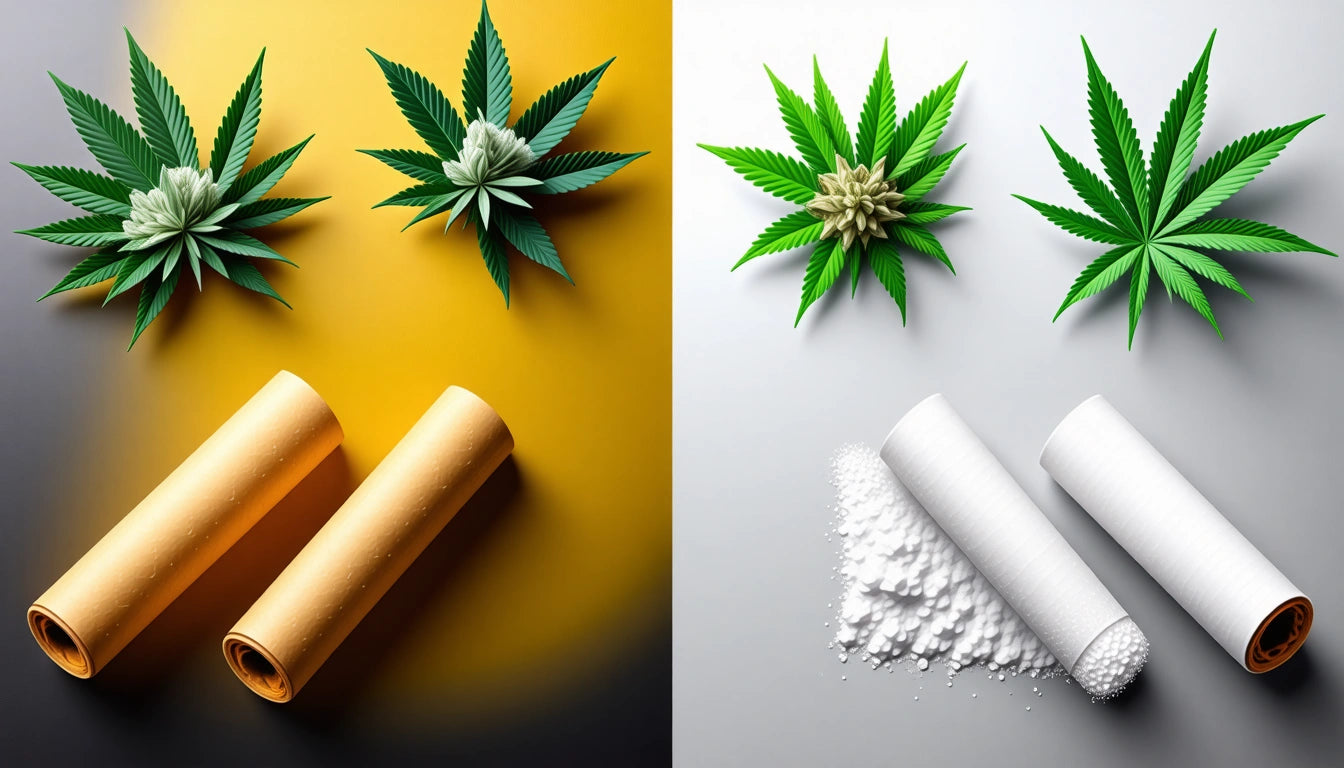
branding
Bleached vs. Unbleached Cones: Which is Better?
Table of Contents
Understanding Cone Basics: Bleached vs Unbleached
Health Considerations: What Goes Into Your Lungs
Flavor Impact: How Processing Affects Your Experience
Environmental Factors: Sustainability in Pre-Roll Production
Visual Appeal and Branding Considerations
Making Your Choice: Factors to Consider When Selecting Cones
The debate between bleached vs unbleached cones has become increasingly important as consumers grow more conscious about what they're smoking. Pre-rolled cones have revolutionized the cannabis consumption experience, offering convenience and consistency. However, the processing methods behind these products can significantly impact everything from flavor to potential health effects.Understanding Cone Basics: Bleached vs UnbleachedPre-rolled cones come in two primary varieties: bleached and unbleached. The distinction lies in the processing method of the paper used to create them.Bleached ConesBleached cones undergo chemical processing to achieve their characteristic white appearance. Manufacturers typically use chlorine or hydrogen peroxide to strip the natural color from the paper fibers. The result is a clean, uniform white cone that many consumers find visually appealing.According to experts on smoking the best cones, bleached papers often burn more evenly and consistently due to their uniform composition, which can be advantageous for commercial pre-roll production.Unbleached ConesUnbleached cones maintain their natural light brown color, resulting from minimal processing. These cones, like those featured in guides about RAW cones, skip the chemical bleaching process, preserving the natural state of the plant fibers used in production.The manufacturing process typically involves fewer chemicals and additives, which appeals to environmentally conscious consumers and those concerned about inhaling potential chemical residues.Highlight: The choice between bleached and unbleached cones ultimately comes down to personal preference, health considerations, and environmental values.Health Considerations: What Goes Into Your LungsWhen comparing bleached vs unbleached cones, health concerns often top the list of consumer considerations.Chemical ResiduesBleached papers may contain trace amounts of chemicals used in the whitening process. While modern bleaching methods have become safer than older chlorine-based processes, some consumers remain concerned about potentially inhaling these residues.Unbleached papers, by contrast, undergo less chemical processing. Many cannabis enthusiasts prefer these natural options when seeking products with minimal additives, similar to how they might select high-quality, unprocessed storage solutions for their flower to maintain purity.Burning PropertiesThe chemicals used in bleaching can affect how the paper burns. Some users report that bleached papers burn faster and hotter, which could potentially create a harsher smoking experience. Unbleached papers typically burn more slowly and at lower temperatures, which some consumers find creates a smoother experience.Flavor Impact: How Processing Affects Your ExperienceFor cannabis connoisseurs, preserving the plant's natural flavors and terpene profiles is essential.Taste NeutralityUnbleached cones are often preferred by flavor purists who believe the natural papers impart less of their own taste to the smoking experience. The minimal processing means fewer compounds that could potentially interfere with the cannabis's natural flavor profile.Bleached papers, while generally designed to be taste-neutral, may introduce subtle flavor changes that particularly sensitive palates can detect. As noted in comprehensive guides on hemp cones, material composition significantly affects taste experience.Terpene PreservationThe burning temperature of the paper can affect how terpenes and cannabinoids are released during combustion. Some cannabis experts suggest that the lower burning temperature of unbleached papers may better preserve delicate terpene profiles, enhancing the overall experience.Environmental Factors: Sustainability in Pre-Roll ProductionEnvironmental impact has become increasingly important to consumers across all industries, including cannabis.Production FootprintThe bleaching process requires additional chemicals, water, and energy compared to producing unbleached papers. This increased resource usage translates to a larger environmental footprint.Unbleached cones generally require less processing, fewer chemicals, and reduced energy consumption during manufacturing. For environmentally conscious brands and consumers, this reduced impact can be a decisive factor.BiodegradabilityBoth bleached and unbleached papers will eventually biodegrade, but unbleached papers typically break down more readily and with fewer potential chemical residues released into the environment.Visual Appeal and Branding ConsiderationsFor cannabis brands, the visual presentation of pre-rolls matters significantly for market positioning.Consumer PerceptionBleached white cones often convey a sense of cleanliness and purity to consumers, which can be advantageous for brands targeting mainstream markets. The bright white background also makes branding elements and logos stand out more vividly.Unbleached cones, with their natural appearance, often appeal to consumers seeking an authentic, back-to-basics experience. They visually signal environmental consciousness and minimal processing, which aligns well with organic and natural brand positioning.As detailed in guides on pre-rolled cones and accessories, the visual presentation of pre-rolls significantly impacts consumer perception and brand identity.Making Your Choice: Factors to Consider When Selecting ConesWhen deciding between bleached and unbleached cones for your personal use or brand, consider these key factors:
Target audience preferences: Understand what matters most to your consumers, whether it's visual appeal, environmental concerns, or flavor purity.
Brand alignment: Choose the option that best reflects your brand values and market positioning.
Production considerations: For commercial operations using cone filling machines, consider which type performs better in your specific equipment.
Price point: Unbleached cones sometimes command a premium price, which may affect your margins or retail pricing.
Regulatory compliance: Some markets have specific regulations regarding paper processing and additives.
The cannabis industry continues to evolve toward greater transparency and consumer education. Whether you choose bleached or unbleached cones, providing clear information about your materials and processing methods helps build consumer trust and loyalty.Ultimately, both options have their place in the market. By understanding the differences between bleached vs unbleached cones and aligning your choice with your values and needs, you can enhance both the smoking experience and your brand reputation in this growing industry segment.

flower
How Many Milligrams Are in a Joint?
Table of Contents
Understanding Joint Measurements: Grams vs. Milligrams
Calculating THC Content in Milligrams
Factors Affecting Joint Potency
Comparing Joint Dosage to Other Consumption Methods
Measuring for Consistent Dosing
Practical Dosage Recommendations for Different Users
Understanding how many milligrams are in a joint is essential for both recreational users and medical cannabis patients seeking consistent dosing. Unlike edibles with clearly labeled THC content, joints require some calculation to determine their potency in milligrams. This guide breaks down the science behind joint measurements and helps you understand exactly what you're consuming.Understanding Joint Measurements: Grams vs. MilligramsWhen discussing cannabis quantities, there's often confusion between weight measurements (grams) and active compound measurements (milligrams of THC/CBD). As explained in this guide, the typical joint contains approximately 0.3 to 0.5 grams of cannabis flower, though this can vary based on rolling style and personal preference.However, knowing the weight alone doesn't tell you how many milligrams of active compounds you're consuming. For that, we need to consider the flower's potency percentage.Calculating THC Content in MilligramsTo determine how many milligrams of THC are in a joint, you need to know both the weight of cannabis and its potency percentage. Here's the formula:THC in milligrams = Grams of cannabis × THC percentage × 1000For example:
A 0.5g joint with 15% THC flower contains: 0.5 × 0.15 × 1000 = 75mg THC
A 0.3g joint with 20% THC flower contains: 0.3 × 0.20 × 1000 = 60mg THC
A 1g joint with 18% THC flower contains: 1 × 0.18 × 1000 = 180mg THC
According to this analysis, the average joint contains between 60-150mg of total THC, depending on size and potency.Highlight: A typical 0.5g joint made with 20% THC cannabis contains approximately 100mg of THC, though bioavailability means you'll absorb only a portion of this amount when smoking.Factors Affecting Joint PotencyBioavailability ConsiderationsIt's crucial to understand that the total THC content in milligrams doesn't equal the amount your body absorbs. When smoking, bioavailability (the proportion of a substance that enters circulation) ranges from 10-35%, meaning much of the THC is lost to combustion or exhaled.For a joint containing 100mg total THC, you might only absorb 20-35mg into your bloodstream. This differs significantly from edibles, where bioavailability is lower but more consistent.Quality and PreparationThe quality of your grind significantly impacts how evenly your joint burns and how efficiently the THC is delivered. Using quality grinding equipment ensures consistent particle size for optimal burning and extraction of cannabinoids, resulting in more predictable dosing.Comparing Joint Dosage to Other Consumption MethodsUnderstanding how many milligrams are in a joint becomes particularly relevant when comparing different consumption methods:Joints vs. EdiblesAs this comparison shows, edibles are measured directly in milligrams of THC, typically ranging from 5-100mg per serving. The effects of 10mg THC in an edible might roughly compare to a few puffs of a medium-potency joint, though the experiences differ significantly in onset time and duration.Joints vs. VaporizersVaporizers typically offer higher bioavailability (40-60%) compared to joints. This means that vaping 0.3g of 15% THC flower might deliver more usable THC than smoking 0.5g of the same flower in a joint.Measuring for Consistent DosingFor those seeking medicinal benefits or consistent experiences, measuring how many milligrams are in a joint is essential. Consider these approaches:
Use a digital scale to weigh your cannabis before rolling
Check lab testing results for accurate THC percentages
Consider pre-rolls with specified potency information
Track your consumption and effects in a journal
Precise measurement tools like scales accurate to 0.01g can help ensure consistency in your joints. These techniques can further help you control dosage by preserving partially smoked joints for later use.Practical Dosage Recommendations for Different UsersWhen considering how many milligrams are in a joint and how that translates to effects, different users have different needs:For BeginnersNew users should start with joints containing lower total THC content, around 30-50mg (typically a small 0.3g joint with 10-15% THC flower). Taking just 1-2 puffs provides a gentle introduction to cannabis effects.For Regular UsersRegular consumers might prefer joints with 75-100mg total THC. This consumption pattern aligns with moderate, regular use that balances effects with tolerance.For Medical PatientsMedical patients often benefit from precise dosing. Rather than focusing solely on how many milligrams are in a joint, many medical users track specific cannabinoid ratios (THC:CBD) and terpene profiles for targeted therapeutic effects.Understanding how many milligrams are in a joint helps consumers make informed decisions about their cannabis use. Whether you're seeking recreational enjoyment or medicinal benefits, knowing your dose in milligrams provides a foundation for consistent, predictable experiences.
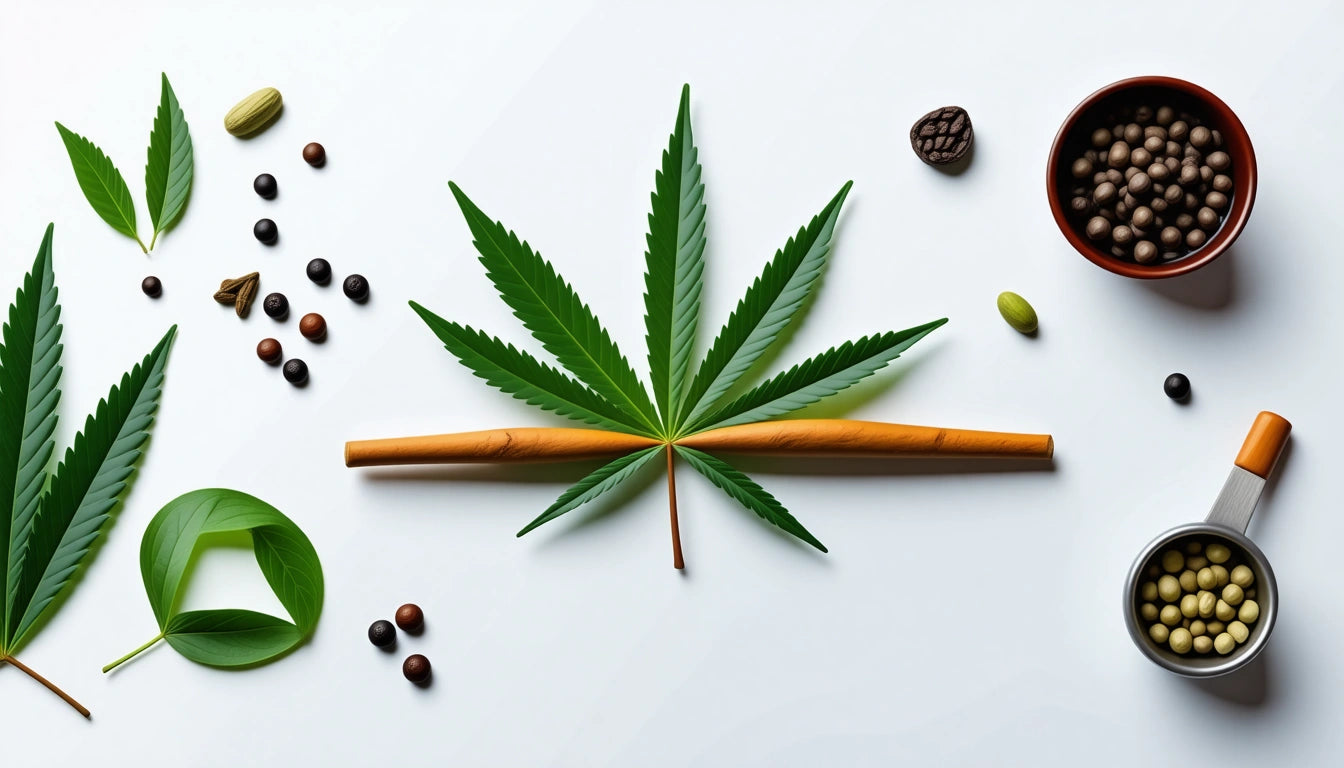
flower
How Many Joints Can You Roll with an Eighth of Weed?
Table of Contents
Understanding Cannabis Measurements
Factors Affecting Joint Quantity
Average Joint Yields from an Eighth
Rolling Techniques to Maximize Your Eighth
Storage Considerations for Preserving Potency
Maximizing Your Cannabis Investment
Understanding how many joints you can roll with an eighth of cannabis is essential for both budgeting and planning your consumption. An eighth represents a common purchase quantity in dispensaries nationwide, but its yield in terms of joints can vary significantly based on several factors.Understanding Cannabis MeasurementsBefore determining how many joints an eighth will produce, it's important to understand what an eighth actually means in cannabis measurements:
An eighth refers to 1/8th of an ounce
This equals approximately 3.5 grams of cannabis
For reference, a quarter is 7 grams, a half is 14 grams, and an ounce is 28 grams
These standardized measurements help consumers and retailers maintain consistency in transactions. According to this guide on cannabis measurements, understanding these basic units is fundamental to responsible consumption.Factors Affecting Joint QuantityJoint Size PreferencesThe size of your joints significantly impacts how many you can roll from an eighth:
Small joints (0.3-0.5g): 7-11 joints per eighth
Medium joints (0.5-0.7g): 5-7 joints per eighth
Large joints (0.7-1g): 3-5 joints per eighth
King-size joints (1g+): 2-3 joints per eighth
Rolling Technique and ExperienceYour rolling technique affects both the quantity and quality of joints from your eighth. Mastering joint rolling techniques can help beginners avoid common mistakes that waste cannabis.Experienced rollers typically achieve:
More consistent joint density
Less spillage during the rolling process
Better airflow for even burning
Highlight: An average eighth (3.5g) typically yields 3-7 joints depending on your preferred size and rolling technique.Average Joint Yields from an EighthBased on consumption data and research on joint quantities, here's what most consumers can expect from an eighth:
Joint Type
Average Weight
Quantity from Eighth
Pinner/Mini
0.3g
10-11
Standard
0.5g
6-7
Cone
0.75g
4-5
King Size
1g
3-3.5
These estimates assume minimal waste during the grinding and rolling process. For those looking to maximize their cannabis, proper storage is also crucial. Using properly sealed containers with child-resistant lids helps maintain freshness and potency while ensuring compliance with safety regulations.Rolling Techniques to Maximize Your EighthTo get the most joints possible from your eighth, consider these techniques:Grinding EfficiencyA quality grinder helps maximize your cannabis by:
Creating consistent texture for easier rolling
Preserving trichomes that might otherwise stick to fingers
Allowing for collection of kief for future use
Filter UsageUsing filters or tips can extend your cannabis supply by:
Preventing plant material from being inhaled or wasted
Creating a defined end point, reducing the cannabis needed
Improving airflow for more efficient burning
For those without traditional filters, creative alternatives for rolling without filters can still help maximize efficiency.Storage Considerations for Preserving PotencyProper storage extends the life and potency of your cannabis, effectively giving you more value from your eighth:
Store in airtight, light-blocking containers
Maintain moderate humidity (58-62%)
Keep away from heat sources
Consider using humidity control packs
Many consumers find that investing in quality storage solutions helps prevent their cannabis from drying out or losing potency, which can affect the smoking experience and potentially reduce the number of satisfying joints from an eighth.Maximizing Your Cannabis InvestmentBeyond just counting how many joints in an eighth, consider these strategies for getting the most value:
Mix with legal herbs (lavender, damiana) to extend your supply while adding complementary effects
Consider a dry herb vaporizer, which typically uses less cannabis per session than joints
Save stems and already-vaped bud for making edibles or tinctures
Learn different rolling styles to find what works best for your consumption patterns
Understanding exactly how many joints you can roll with an eighth helps with budgeting and consumption planning. By applying proper techniques and storage practices, you can ensure you're getting the most from your cannabis purchase, whether you prefer many small joints or a few larger ones.
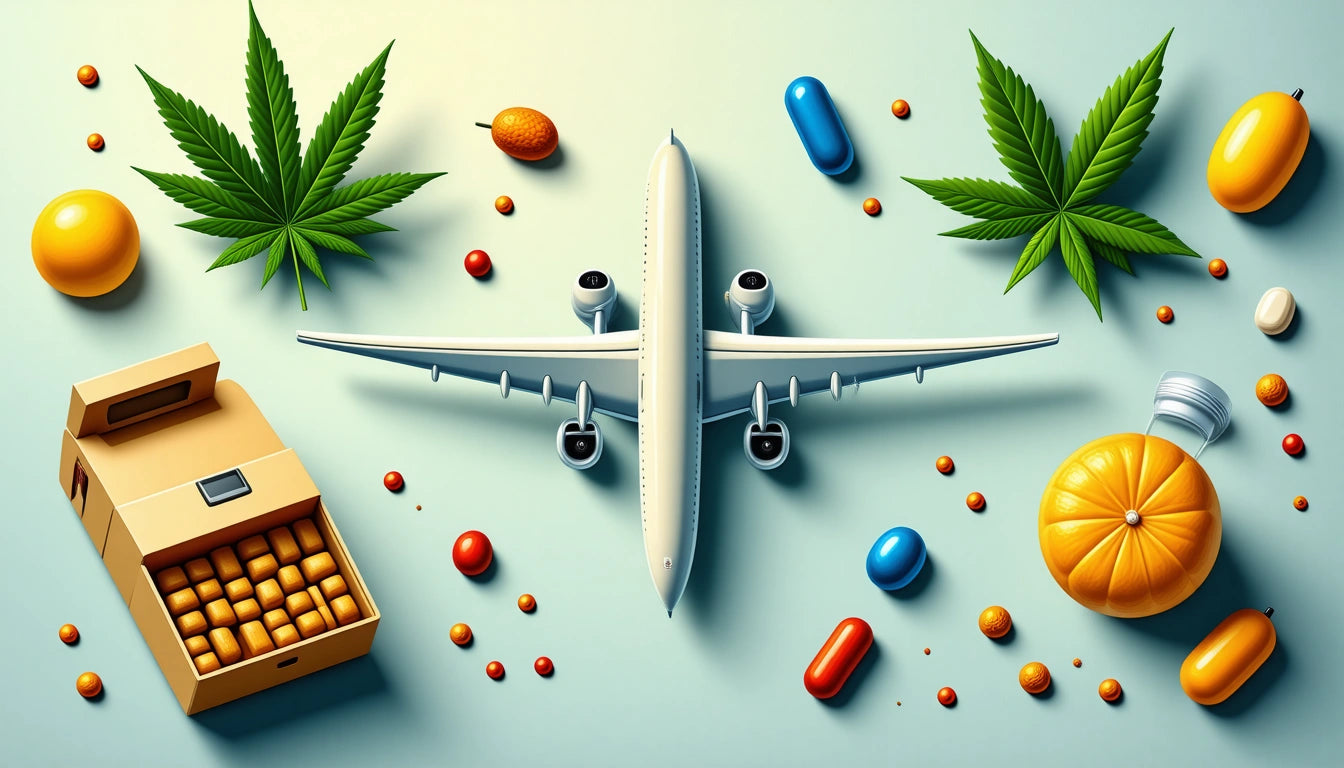
compliance
Can You Bring Pre-Rolls on a Plane?
Table of Contents
Federal Regulations and Pre-Rolls: What You Need to Know
TSA Guidelines for Cannabis Products
Domestic Flights: State-to-State Considerations
International Travel with Cannabis Products
Storage Solutions for Traveling with Pre-Rolls
Legal Alternatives When Traveling
Traveling with cannabis products like pre-rolls has become a common question as legalization spreads across states. The short answer to whether you can bring pre-rolls on a plane is complex: while technically prohibited under federal law, the reality involves various nuances regarding enforcement, state laws, and specific circumstances.Federal Regulations and Pre-Rolls: What You Need to KnowUnder federal law, cannabis remains a Schedule I controlled substance, making it illegal to transport across state lines regardless of the legality in your departure or arrival state. This classification applies to all cannabis products, including pre-rolls, edibles, and concentrates.According to guidelines on bringing pre-rolls through TSA, federal air space falls under federal jurisdiction, creating a legal gray area even when traveling between two states where cannabis is legal.TSA Guidelines for Cannabis ProductsThe Transportation Security Administration (TSA) has stated that their primary focus is security threats, not searching for cannabis products. However, if discovered during routine screening, TSA agents are required to report potential violations of law to local law enforcement.This creates a situation where enforcement can vary significantly depending on:
The airport you're departing from
The specific TSA agents you encounter
Local law enforcement policies
The quantity of cannabis products
Some airports in legal states have adopted more lenient approaches, with certain locations even providing amnesty boxes where travelers can dispose of cannabis products without penalty before security screening.Highlight: While TSA doesn't specifically search for cannabis, they must report it to law enforcement if discovered during screening.Domestic Flights: State-to-State ConsiderationsWhen flying between states where cannabis is legal, travelers should understand that they're still technically violating federal law. Guidelines for traveling with pre-rolls emphasize that checked baggage undergoes screening processes that can detect cannabis products.The risk increases significantly when traveling to states where cannabis remains illegal, as you could potentially face criminal charges upon arrival if discovered with pre-rolls or other cannabis products.Medical Cannabis ConsiderationsMedical cannabis patients face additional challenges. While some states offer reciprocity for out-of-state medical cards, this doesn't override federal transportation laws. Patients should research destination state laws thoroughly before considering travel with medicinal cannabis products.International Travel with Cannabis ProductsInternational travel with cannabis products, including pre-rolls, presents even greater legal risks. Many countries maintain strict drug laws with severe penalties for cannabis possession. Understanding pre-roll travel regulations is essential before considering international transport.Even when traveling to countries that have legalized cannabis, international borders and customs enforcement operate under different legal frameworks that typically prohibit cannabis transportation.Storage Solutions for Traveling with Pre-RollsFor those in situations where travel with pre-rolls is permitted (such as within state boundaries by car), proper storage becomes important. Safety considerations for pre-rolls highlight the importance of proper containment.Our secure packaging solutions with child-resistant features provide discreet, odor-controlling options that help maintain product freshness while preventing accidental access. These containers are designed to meet compliance standards while providing practical functionality for consumers.Proper storage considerations include:
Airtight containers to preserve freshness and control odor
Child-resistant packaging for safety and compliance
Crush-proof options to maintain product integrity
Discreet designs that don't attract unnecessary attention
Legal Alternatives When TravelingRather than risking legal complications by bringing pre-rolls on a plane, consider these alternatives:Research Destination OptionsIf traveling to a state with legal cannabis, research local dispensaries at your destination. Many travelers find this approach simpler and legally safer than attempting to transport products across state lines.Hemp-Derived AlternativesSome hemp-derived CBD products containing less than 0.3% THC are federally legal and may be permissible for air travel. However, these products should be properly labeled and accompanied by certificates of analysis when possible.Understanding pre-roll alternatives can help travelers make informed decisions about their options when traditional cannabis products aren't feasible for travel.Practical Travel Advice for Cannabis ConsumersThe safest approach regarding whether you can bring pre-rolls on a plane remains straightforward: federal law prohibits transporting cannabis across state lines, including via air travel. Despite varying enforcement priorities and changing state laws, air travelers should understand they assume significant legal risk when attempting to bring cannabis products onto flights.For those who use cannabis medicinally or recreationally, planning ahead for trips by researching local laws and available options at your destination represents the most prudent approach to avoiding potential legal complications while still meeting your needs.

